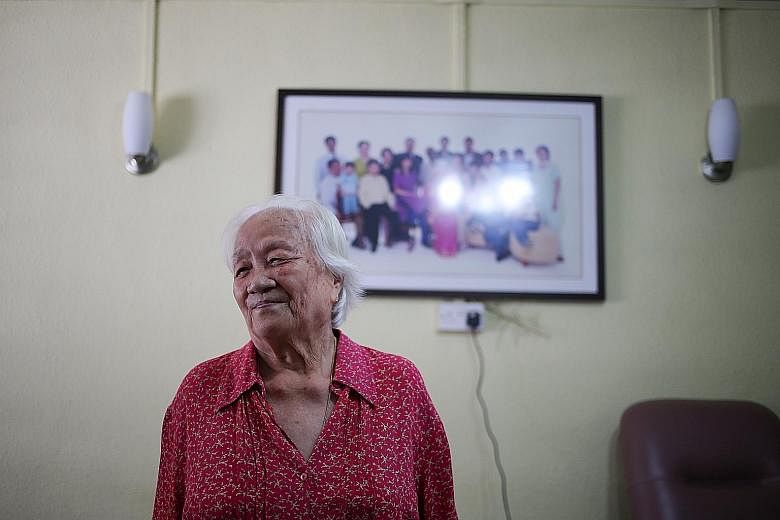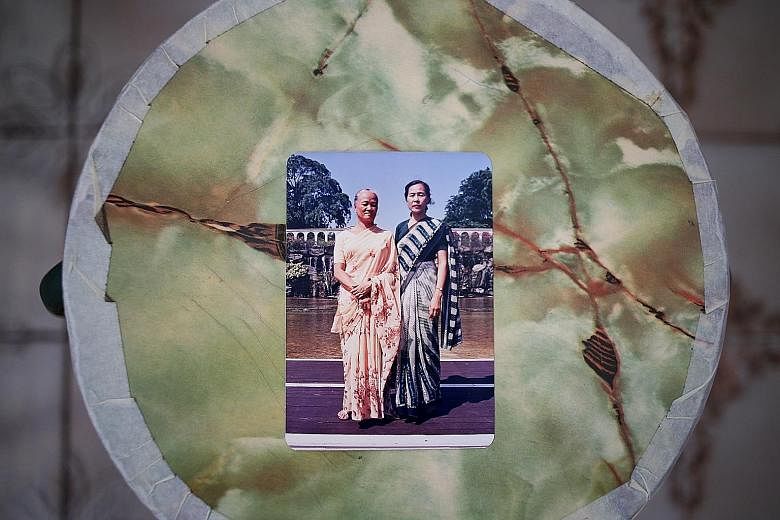It is no exaggeration to say that Madam Indranee Nadisen, 77, has mothered dozens of children.
The housewife has seven of her own and she looked after 43 children for a period after they were abandoned or abused by their own parents. She has been described as a "super foster mother" who cared for one child after another for 32 years, until health woes forced her to stop about 10 years ago.
The grandmother of seven suffers from arthritis and had replacement surgery for both her knees. Her shoulders also troubled her and at one point, she could not lift her right hand, let alone carry a baby.
But Madam Indranee, who lives with her husband, 83, and a maid, said she misses it. "All our worries go away when we see children run about, laugh and love us."
She had dedicated her life to giving a home to those from disadvantaged backgrounds. "All my foster children call me mama as I take care of them like my own," she said. "I also feel sorry for them, and wonder why their parents abandoned them or stopped taking care of them."
Perhaps her love for children who need care resonated with her own experience. She was born into a Chinese family, but given away as a baby to an Indian couple.
She has no idea who her biological parents were and never asked her adoptive parents about it. They never discussed her adoption.
"I didn't want to hurt their feelings by asking if I'm adopted but it was obvious," she said, pointing to herself. "This is what I think: In the old days, the Chinese didn't like girls so they gave them away."
She said her adoptive parents, who were childless and had another adopted daughter, cherished her, so she has no regrets.
Madam Indranee stopped going to school after Primary 6 when her father lost his job. She does not know her late father's occupation, but said her mother began fostering to earn some income.
Foster parents get an allowance from the Government to help defray the cost of caring for a child. For example, when Madam Indranee was still fostering children in the 2000s, she received an allowance of up to about $800 a month for each child.
At the age of 21, she married Mr Anthony Ambrose Dorai, who became a foreman. The love match produced five sons and two daughters, who are now in their 40s and 50s.
She began fostering children when her own were in school, taking up to three at a time. Her children pitched in to help too, for example, in looking after the babies.
She said: "You must be patient and love children to be a foster mum. You can't smack, scream or shout, as they will get more angry and stubborn. But if you show them love, they will listen."
Madam Indranee looked after most of the babies for between a month and up to two years. Only one or two gave her grief, including a baby boy who cried non-stop.
She said: "I told my father then that I didn't know what to do with this baby who kept crying. My father asked me if he were my own child, would I throw him away?"
So she continued to care for him until he was placed for adoption.
Parting with any of her children was never easy, she said. "They would cling onto me and refuse to let go. My heart would break and I could not stop crying."
She said she is in touch with a few of her foster children. One was a baby she looked after for four or five years. He is now in his 20s and visits her every Christmas.
Another child lived with her family for almost 30 years, until she married and moved out recently. Madam Indranee said: "All of us loved her so much she didn't want to go. To me, she's my daughter."
Mary (not her real name) is now a 32-year-old financial consultant. She was placed in foster care as an infant as both her parents suffer from schizophrenia, and she asked to continue living with Madam Indranee's family as an adult as her father could be violent.
The graduate, who topped her class in university, said: "Mummy's love is genuine and this is something no one can replace. And my (foster) siblings are supportive.
"If I didn't have them, I might have ended up on the streets or joined a gang. They gave me a fighting chance to get out of the rut and it changed my life."
The Ministry of Social and Family Development said Madam Indranee was one of the longest-serving foster mothers here. Its spokesman said: "Her selfless act of opening up her home to welcome these children into her care has given them another chance at achieving happiness and success in life."



